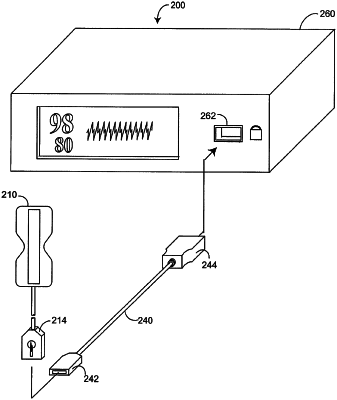| CPC A61B 5/7221 (2013.01) [A61B 5/14551 (2013.01); A61B 5/7271 (2013.01); A61B 2560/0266 (2013.01); A61B 2560/0475 (2013.01); A61B 2562/08 (2013.01); A61B 2562/221 (2013.01); A61B 2562/222 (2013.01)] | 14 Claims |

|
1. A method of utilizing a memory device, the memory device storing access information usable to unlock otherwise unavailable processing by a patient monitor so that the patient monitor processes a signal output by a noninvasive optical sensor to determine a physiological parameter of a patient monitored by the noninvasive optical sensor, the method comprising:
acquiring a first sensor apparatus comprising a first noninvasive optical sensor and a first memory device, the first noninvasive optical sensor comprising a first detector configured to output a first signal responsive to attenuation of light by a first tissue, the first memory device storing first access information usable to indicate to a patient monitor that the first noninvasive optical sensor is connected and to unlock otherwise unavailable processing of the first signal by the patient monitor;
obtaining a second memory device and programming the second memory device to store second access information compatible with the first memory device so that the second memory device is equivalent to the first memory device; and
attaching the second memory device to an assembly configured to support the second memory device and couple to a second sensor apparatus comprising a second noninvasive optical sensor, the second noninvasive optical sensor comprising a second detector configured to output a second signal responsive to attenuation of light by a second tissue, the assembly being configured to communicate the second access information from the second memory device to the patient monitor to indicate to the patient monitor to unlock otherwise unavailable processing of the second signal by the patient monitor.
|